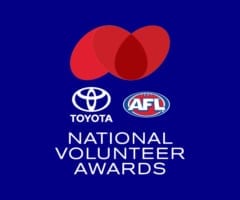WHAT is the current state of our great game? Turn on SEN116, watch The Footy Show, chat to friends socially, it’s seems to be one topic that has got everyone talking.
The AFL have put together the Competition Committee and the Legends & Media Committee. Blighty’s got his ideas. Rules are being trialled and tested by the Hawks and Lions. Kochie’s not happy.
Is it as big of an issue as is being made out or do we need all need to take a chill pill and let the game evolve? And how does what is happening on the TV at AFL games relate to us in local footy? Do we just wait to see what measures the AFL tries and follow suit, or do we need to be proactive in protecting what is great about local footy. At a time when many talk of their preference of watching local footy over the AFL, do we need to ensure we monitor our own trends and consider changes?
I commend Steve Hocking and his team for being proactive because in many aspects the game is not what it was. We see it at local level. 36 players in one third of the ground doesn’t make for great watching, playing or umpiring. When you see it at junior level it’s even worse.
While we adopt most rules and procedural changes the AFL does, we don’t adopt all. And our decision not to in some areas has been vindicated.
We kept 25-metre penalties and introduced yellow and red cards, both used well by umpires as measures to control the game and players.
When the AFL introduced two runners, it went against our philosophy that there is already too many officials on the ground so we resisted the change despite pressure from clubs. We’d already put drink carriers in fluoro vests so we could see if they were on the ground too long as we knew some clubs were using them for competitive advantage.
We got rid of the bounce around the ground and introduced ball ups to get the play moving more quickly and later in the centre bounce to ensure consistency and keep the better, even if older, umpires running around.
We removed automatic time on at ball-ups, leaving it to the discretion of the umpire, so that combined with balling it up as quick as possible, knowing on our smaller grounds we have quite a few stoppages, it reduced the average quarter length from 31.5 minutes to just over 28 minutes. All without negatively impacting the game.
We still wait for the goal umpire to signal before a kick-in but made them speed up and lose the theatrics, knowing that in games where we have club goal umpires, there’s still plenty of times the person at the other end isn’t switched on and we want to make sure every score is recorded.
We’ve introduced last possession, like in the SANFL, in juniors and women’s footy and it’s working well in keeping the game moving and reducing the number of adults on the field in junior footy.
There’s presently lots of discussion around potential zones/starting positions, paying more free kicks and capping rotations to enhance the game.
A point we have raised before which I still think is worth debating is that of player numbers, and whether we should keep EFL footy at 18-a-side.
With the increasing professionalism and subsequent increase in the speed of EFL competitions, the size of most of our grounds has more of an impact on the game than ever before. With increasing the size of grounds near on impossible, the other option is to reduce the number of participants on the field.
The basic numbers show that on our smaller grounds (of which there are plenty), EFL players have only about 60-65% of the space per player than an AFL player on the MCG does. It would be the same as if we were offered the MCG to play this week’s Vermont v Blackburn game, but on the proviso we put temporary goals at the back of the square to use as the goals at one end.
If the AFL is considered too congested, what hope do the players at our level have? Did the VFL have it right back in the day with 16-a-side? From memory it was certainly open and free flowing footy. As well as helping game style, would it help team numbers in some age groups?
My main concern with the current discussion is if changes are decided at AFL level, the impact of introducing them at grassroots level needs to be taken into consideration, which is part of the conversation I’m yet to hear.
If we want starting positions at every stoppage, how is that policed in a game where there is only one league appointed umpire. How is a 15-year-old kid umpiring an under-12D game expected to adjudicate on this?
If we cap interchange, who counts (another volunteer) and in the absence of independent league officials at every game, how do you resolve the issue when clubs disagree on how many the other club has had. While possible issues are not insurmountable, any changes need to make the game easier, not harder, to manage and adjudicate.
The game needs to evolve. But how that occurs is often harder at our level than it is at the elite. The next few months are potentially transformational in the history of our great game. It’s important we have the conversation together and think of the impact at all levels of the game.
As you watch the footy this weekend, both senior and junior, keep an eye out for how it looks and is being played, and if it could be better.









































